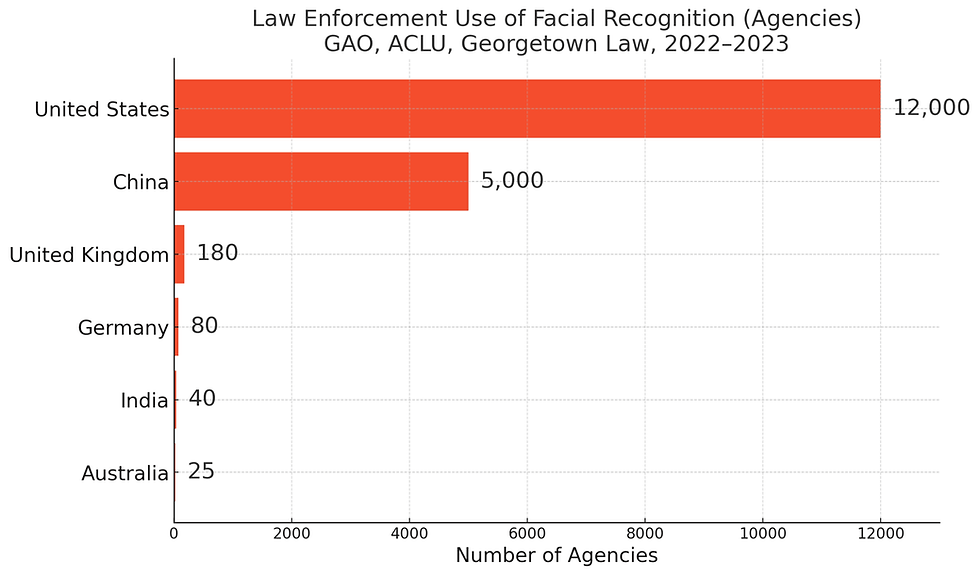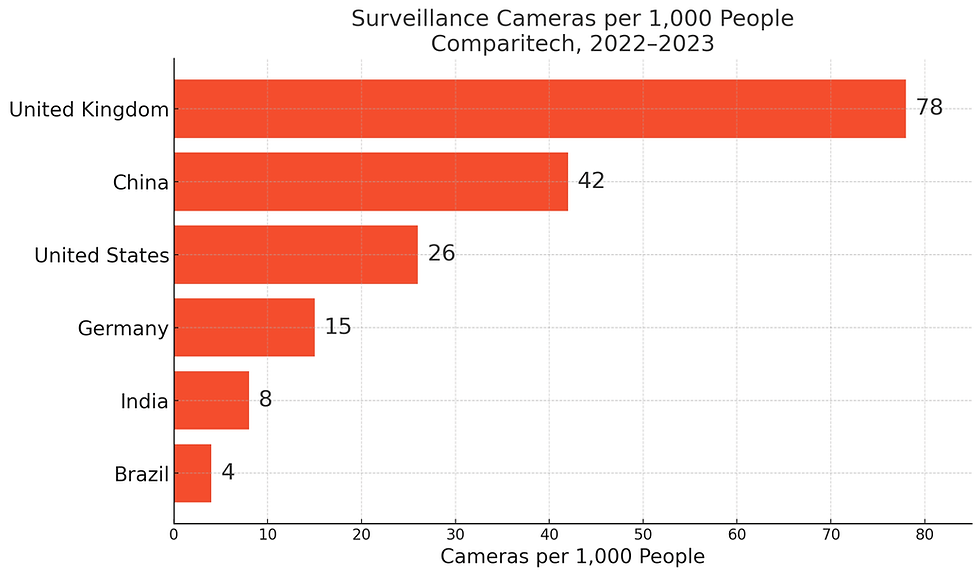Snitz's who's watching you report!
- snitzoid
- Aug 12
- 2 min read
The Report does not spy on you or sell your data to Mark Zuckerberg. As far as you know.
AI Is Watching You—Where, Why, and What’s Next?
World Population Review
How governments are using AI to track, predict, and control behavior.
A silent revolution is underway. Cameras follow your face. Algorithms guess your next move. Governments, often unnoticed, are collecting more data than ever.
This month, we dive into the rising tide of state surveillance—how facial recognition, biometric IDs, and predictive policing are quietly reshaping daily life.
Who’s leading? Who’s resisting? And what does it mean for your freedom, safety, and future?
Let’s pull back the curtain.
1. 🇨🇳 China: The Surveillance Superpower
In China, surveillance isn’t an add-on—it’s part of the infrastructure. With over 600 million cameras, the “Skynet” network watches nearly every corner of public life, from apartment lobbies to school hallways.
AI-powered facial recognition flags individuals in seconds. Social credit scores link behavior to rewards—or punishments. In Xinjiang, predictive policing has gone even further, drawing global criticism for targeting minority populations.
The sheer scale is unmatched, and the control it enables is both admired and feared worldwide.
Hard truth: China has one surveillance camera for every 2.4 people—the highest ratio in the world.

2. 🇺🇸 United States: Surveillance by Many Hands
In the U.S., surveillance is fragmented, but no less pervasive. Police departments use facial recognition powered by companies like Clearview AI. Schools monitor students' keystrokes. Mobile data is quietly sold to federal agencies.
Unlike in China, public resistance has led to bans on facial recognition in cities like San Francisco and Portland. But without national regulation, the legal landscape remains a patchwork.
Predictive policing tools—designed to anticipate crime—are still in use despite evidence of bias and flawed data.
Did you know? Roughly 1 in 4 U.S. law enforcement agencies use facial recognition, often without public consent.

3. 🇬🇧 United Kingdom: Watched, But Not Always Warned
The UK may not have invented surveillance, but it has embraced it. London alone hosts over 600,000 CCTV cameras—making it the most-watched city in the Western world.
Recently, police have begun deploying live facial recognition at concerts, protests, and crowded events. Critics argue these tests blur the line between public safety and mass monitoring.
Yet, most of this expansion has happened without clear laws or public consultation.
Historical echo: The UK’s mass CCTV rollout in the 1990s was meant for crime hotspots—now it spans most of urban life.

4. 🇮🇳 India: Expanding Without Guardrails
India is building one of the world’s largest biometric systems—quickly and with few privacy protections. Over 1.3 billion people are enrolled in Aadhaar, the country’s national ID, linking fingerprints and iris scans to daily life.
But India’s ambitions go further. Cities like Delhi and Hyderabad are trialing real-time facial recognition, sometimes during protests. This raises fears about how surveillance might be used to suppress dissent.
With no comprehensive data protection law, oversight is still catching up.
Staggering stat: As of 2023, India’s facial recognition system stored over 140 million images—with few rules on usage.

Bình luận